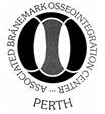Grafting
Grafting
In some situations, if there is a deficiency in bone or gum volume, it may be necessary to carry out a grafting procedure prior to or at the time of implant placement.
BONE GRAFTING
There are three main grafting procedures used, and depending on the size of graft and the quality of your bone, an implant can be placed at the same time or the graft left to heal for a period of five to nine months before implant placement. Bone grafting procedures are typically carried out under general anaesthesia.
1. OSTEOTOME SINUS LIFT
This grafting procedure, as the name suggests, is used to restore bone height in the back of the upper jaw where the floor of the sinus sits quite low and there is not enough height of bone to place an implant. This procedure involves partially preparing the site for implant placement and then using the bone collected from the preparation site or Bio-Oss®, a bone grafting material (see below), the lining of the sinus floor is gently tented up and the implant placed immediately.
2. LATERAL SINUS GRAFT
This grafting procedure is used to restore larger bone deficiencies in the back of the upper jaw. The sinus is accessed through a “window” inside the mouth and the sinus membrane is gently elevated. Bone particles taken from the donor site, usually the back of the lower jaw or Bio-Oss®, a bone grafting material (see below), is carefully placed between the sinus membrane and sinus floor. The “window” is covered over with Bio-Gide®, a collagen membrane (see below). Depending on the size of the graft and the quality of your bone, the implant may be placed immediately or the graft left to heal with delayed implant placement.
3. BLOCK GRAFT
This grafting procedure is used to restore deficiencies in the bone in the upper jaw at the front of the mouth. Bone is taken from the donor site (usually from the back of the lower jaw) and fixed to the deficient site in the upper jaw with small surgical screws. Generally implant placement is delayed with this type of graft. The screws are removed at the time of implant placement.
SOFT TISSUE GRAFTING
Soft tissue grafting is often necessary for repairing the damage caused by gum recession or defect after an extraction or infection. With a soft tissue graft, missing gum mass can be replaced for better aesthetics and to improve the success of dental implant surgery, if needed. During soft tissue grafting, the gum tissue is often taken from the roof of your mouth this can feel like a Pizza burn afterwards or by creating a flap that will be used to cover the exposed portion of tooth or implant.
BIO-OSS® AND BIO-GIDE®
Bio-Oss® and Bio-Gide® are natural products, much like human tissue, and are used to promote new bone formation and tissue healing. Initially they are incorporated into the tissues during the healing process then the body gradually breaks them down.
Both Bio-Oss® and Bio-Gide® are approved for dental use by the Australian Therapeutic Goods Association (TGA). It has been used globally for over 25 years and proves the most biocompatible grafting material. These products do not affect your ability to donate blood via Australian Red Cross.
Bio-Oss® is made from the mineral components from the bones of specially selected Australian cattle, with all of the organic components are removed during the manufacturing process leaving just the calcium compounds. The Bio-Oss acts as a scaffold for the body to form new bone at the site.
Bio-Gide® is a membrane derived from pig collagen. The Bio-Gide® acts as a protective barrier for the grafted site and the natural protein structure of the Bio-Gide® aids in wound healing.

